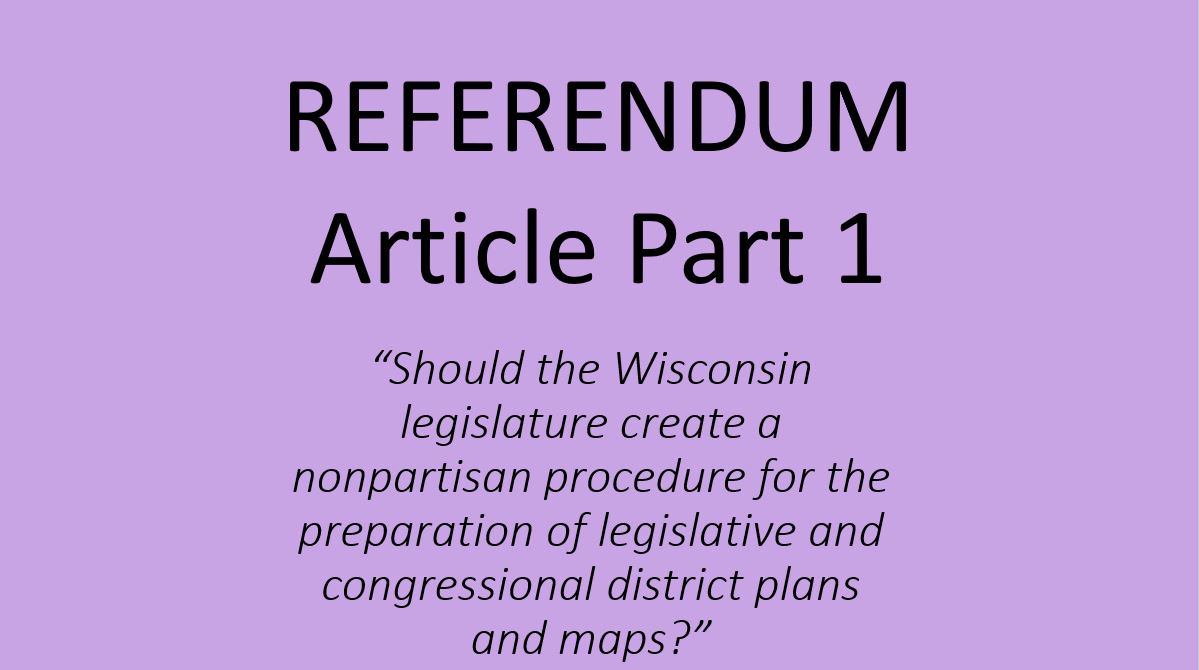Nonpartisan Redistricting (Fair Maps) Yes or No?
Nonpartisan Redistricting (Fair Maps) Yes or No?
by Irene Bugge
On April 6, voters in Polk County will find the following question on their ballot: “Should the Wisconsin legislature create a nonpartisan procedure for the preparation of legislative and congressional district plans and maps?” What does this actually mean and why is it important? This article is the first installment of a series to educate voters about the nonbinding referendum question on the ballot and aid them in making an informed decision.
If you live in Polk County, you will soon see yard signs and bumper stickers that read: “Vote Yes: Nonpartisan Redistricting, End Gerrymandering NOW and People Powered Fair Maps.” You may also see members of the local League of Women Voters (LWV SCV), enthusiastically waving fair maps signs on street corners in your communities. If you are a Facebook or Instagram user, you might even see an invitation to attend a zoom class entitled “Fair Maps 101 – What is Gerrymandering?”
“We are hoping that Polk County voters will say ‘yes’ to nonpartisan redistricting,” said Carolyn Saunders, Chair of LWV SCV. “Five years ago, people’s eyes glazed over if you talked about gerrymandering, Things are really different today. Referendums like the one Polk County voters will see on the spring ballot are showing up all over Wisconsin, and the nation, and passing with solid majorities.”
What is nonpartisan redistricting? Why does it matter?
Every 10 years after the national census, states redraw the boundaries for their legislative and congressional voting-districts (state Assembly, state Senate and national House of Representatives). This process is called redistricting. The maps that are created determine how people are represented in state and federal elections for the next decade. All 50 states will be redrawing new maps this year based on the 2020 census data.
In Wisconsin, the state legislature authorizes the drawing of new voting district maps. These maps are vulnerable to gerrymandering by the political party in power at the time district boundaries are redrawn. Gerrymandered districts are often characterized by irregular shapes that do not follow county or municipal lines. The boundaries are drawn to dilute the voting power of the minority party by packing their voters together into a small number of districts or spreading out their numbers over many districts. Both Democrats and Republicans have used partisan redistricting to their advantage.



Comments are closed